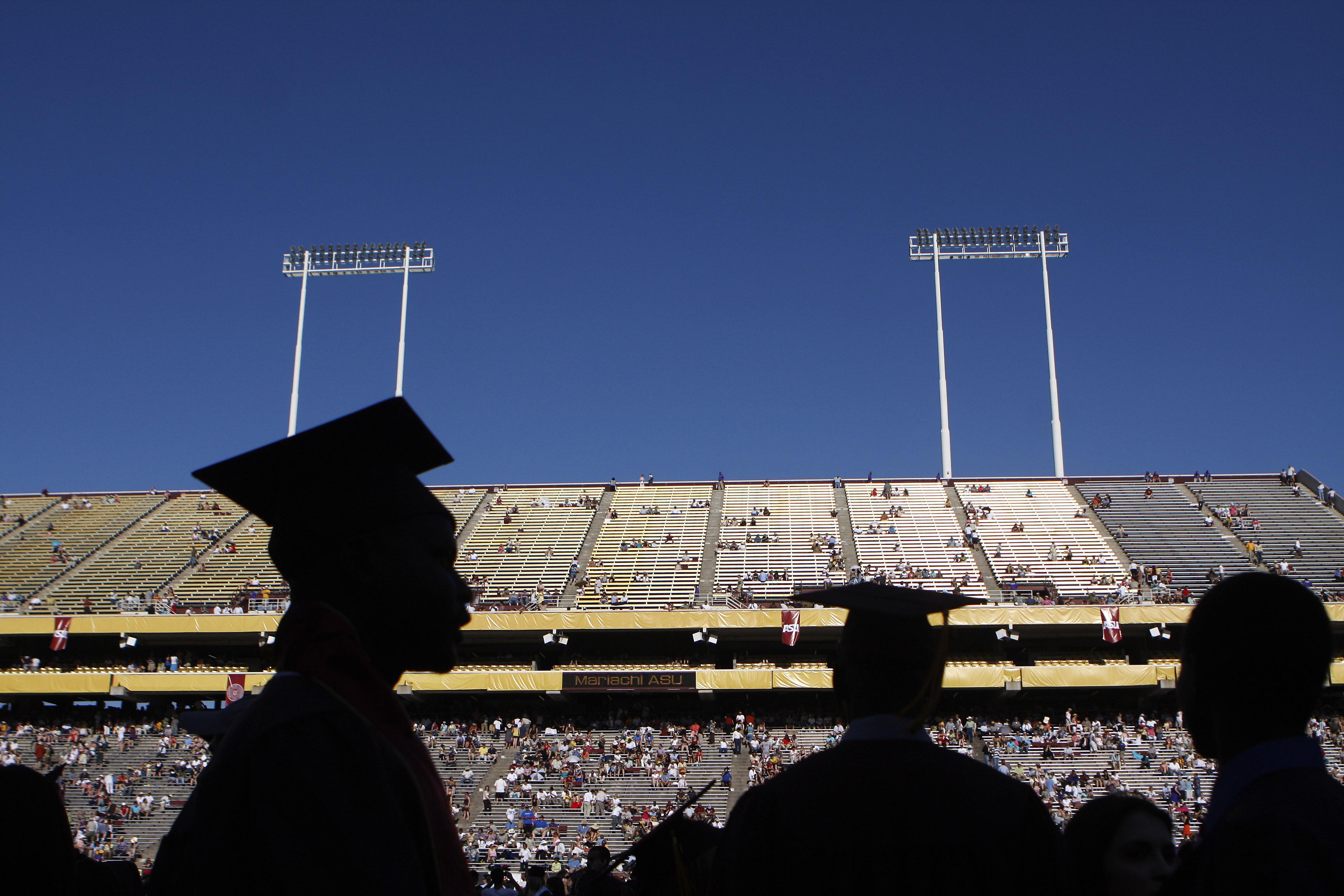Over the weekend, the Washington Post’s Matt O’Brien published this killer graph that captures just how unequal the economic playing field is for children of the rich and poor. Low-income kids who graduate from college, it shows, have the same odds of ending up at the bottom of the economic ladder by age 40 as high-income children who drop out of high school.

Unfortunately, the article’s headline—which has been burning up Facebook and Twitter—is misleading. It isn’t true that “poor kids who do everything right don’t do better than rich kids who do everything wrong.” The graph, adopted from a new paper by Brookings researchers, makes that clear. If you’re a low-income kid who graduates from college, you’re much more likely to end up in the top 40 percent of earners than a privileged schmuck who flunked out of 11th grade.
The real issue, as O’Brien points out, is that rich kids enjoy lots of advantages that keep them from falling to the very bottom of income distribution, and sometimes those advantages keep them at the very top. They might be able to go to work for family businesses, for instance, or family friends. Researchers like Brookings’ Richard Reeves call that collection of advantages “the glass floor.” Educated poor kids are in the exact opposite position. Many attend second- or third-rate (and possibly for-profit) colleges that churn out less-than-useful degrees. And instead of a floor propping them up, their families and friends can act like an anchor pulling them down. A classic example: a college-educated woman who goes home and marries a boyfriend who never made it past high school and has trouble holding down a job.
America’s lack of class mobility is still largely a problem of education. As of now, low-income kids have low high-school graduation rates, rarely go to college, and tend not to finish when they do, all of which keeps them out of the middle class. But education alone isn’t the issue—there are plenty of forces that keep rich underachievers rich and poor strivers poor.
